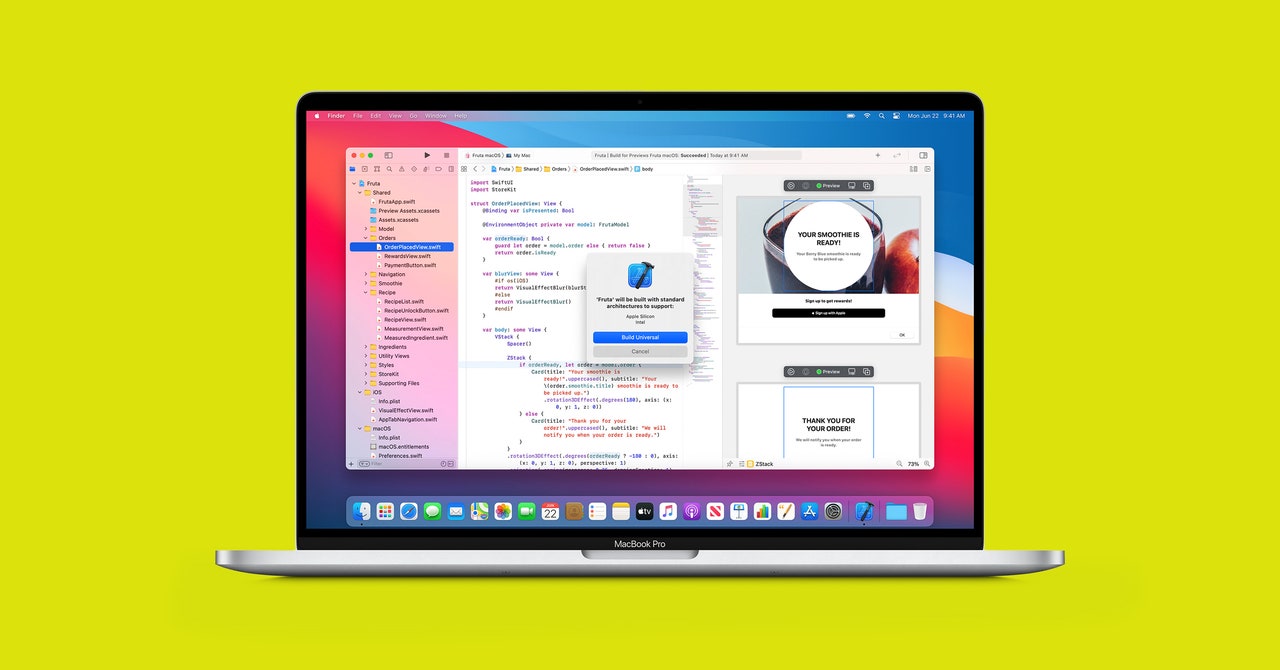As has been rumored and rumored and rumored and then rumored some more, Apple will no longer rely on Intel chips for its MacBook laptops. Instead, the company’s homegrown ARM-based processors—already a staple of the iPhone and iPad—will provide the brains for the future of Apple computing. The shift to so-called Apple Silicon is monumental not just for the performance gains of Apple’s laptop and desktop lines, but for the surprising convergence of all of its devices.
“When we make bold changes, it’s for one simple but powerful reason: so we can make much better products,” said Apple CEO Tim Cook during Monday’s pre-taped Worldwide Developers Conference keynote. The first ARM-based Mac will be available by the end of the year; the company expects the transition to take two years in all, and will continue to release some Intel-based products until then. How close the horizon lies, though, matters less than how Apple plans to get there. Breakups have a tendency to be messy, after all.
Apple and Intel’s relationship dates back to 2006, when the former transitioned away from PowerPC processors. The switchover was rocky for a year or two, as developers had to update their software to accommodate Intel’s x86 architecture. Think of it like translating a novel into a new language. That task awaits developers again, although it looks to be less onerous than previous switchovers.
“I think we’re looking at an incredibly smooth transition,” says iOS and macOS developer Steven Troughton-Smith. Part of that is thanks to previous groundwork Apple has laid. Several years ago it dropped support for 32-bit apps that are incompatible with ARM’s 64-bit architecture. At last year’s WWDC it introduced Catalyst, which modifies iPad apps to run on the macOS without having to rewrite them from scratch. And a few months ago, Apple launched “Universal Purchase,” which allows customers to buy an app one time and have it appear across iOS, iPad OS, and macOS. Those features haven’t been especially popular yet, but their role crystalizes in a world where macOS and iOS run on the same platform.
On Monday, though, Apple outlined several failsafes to ensure as few bumps alon

